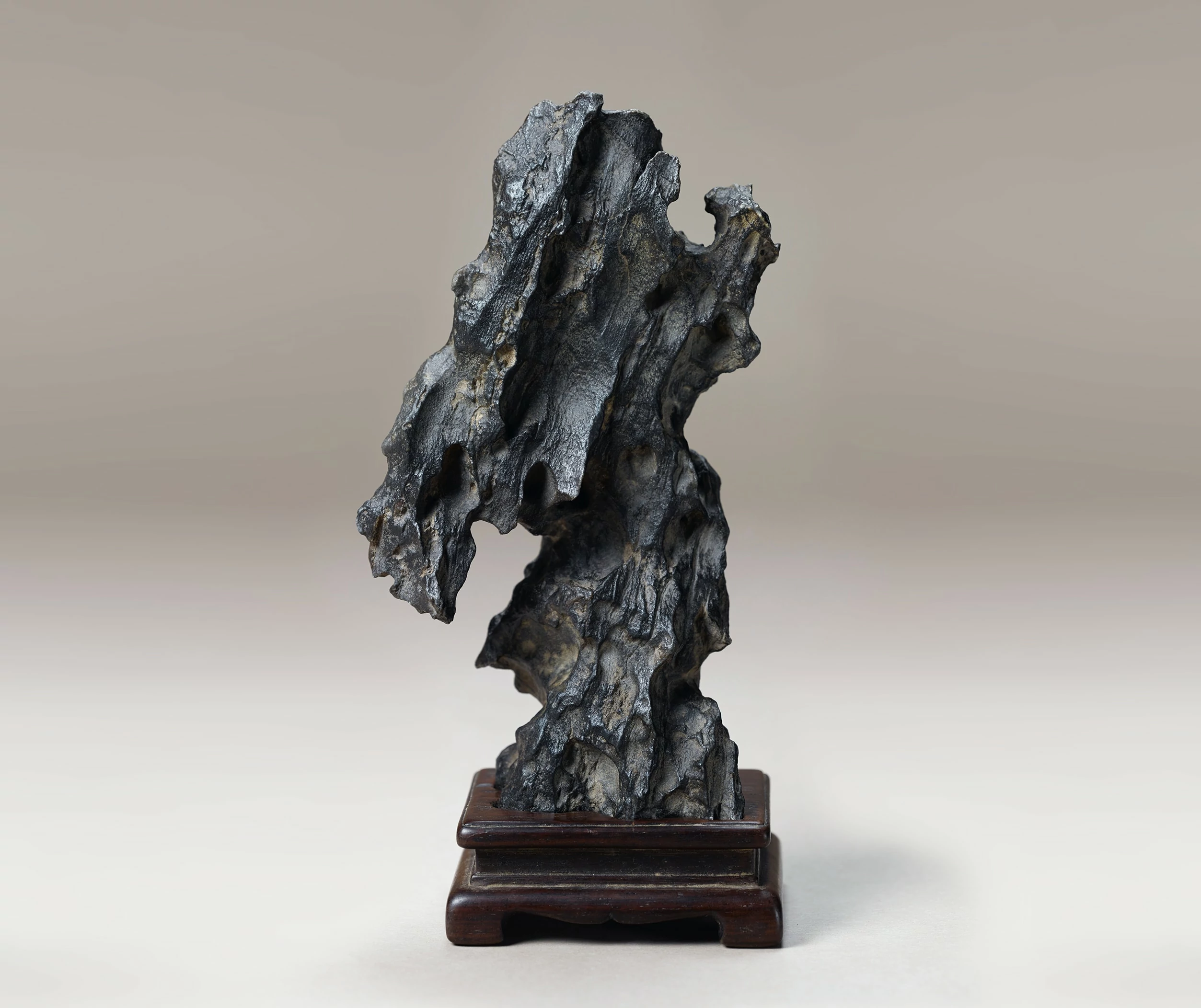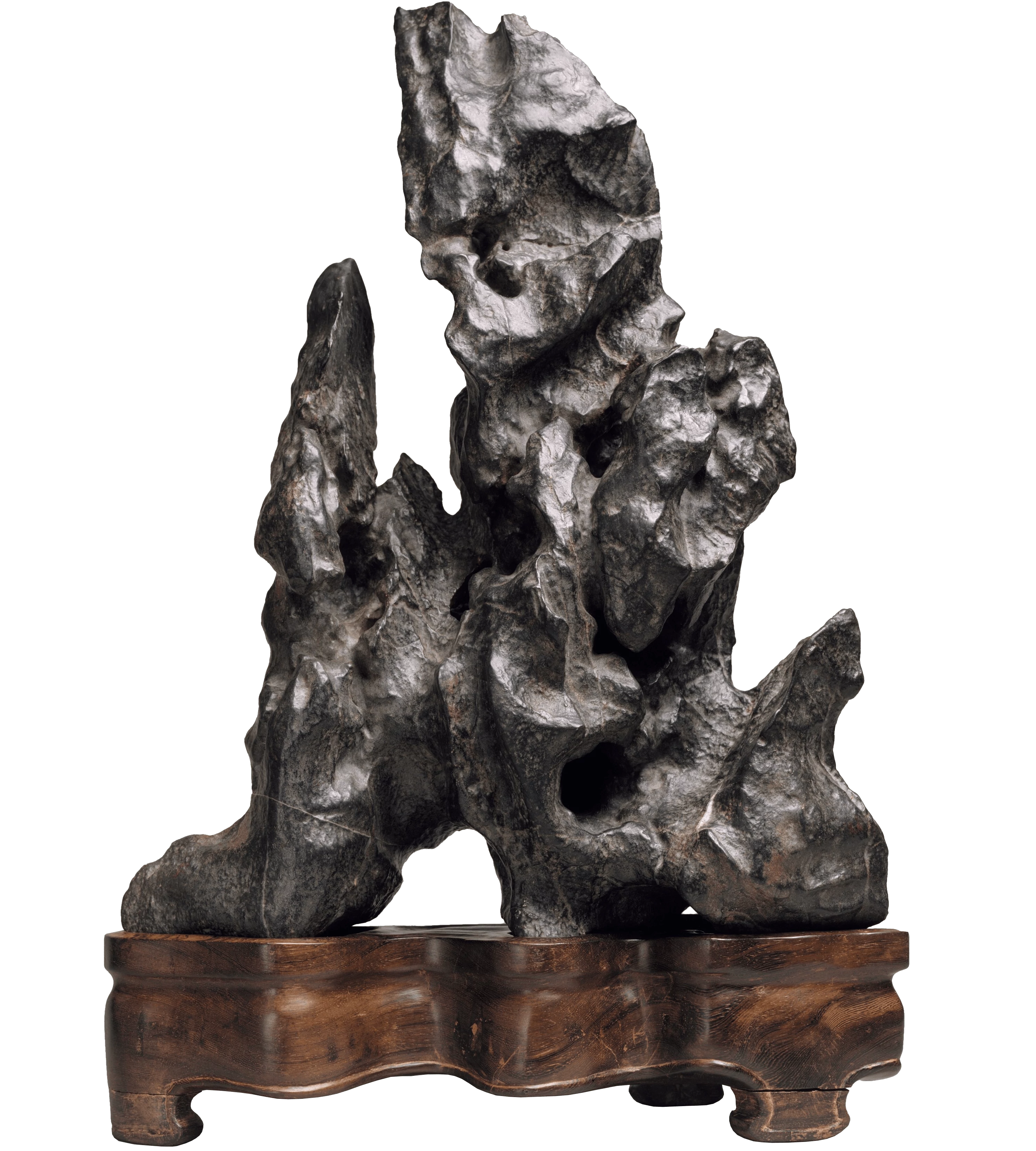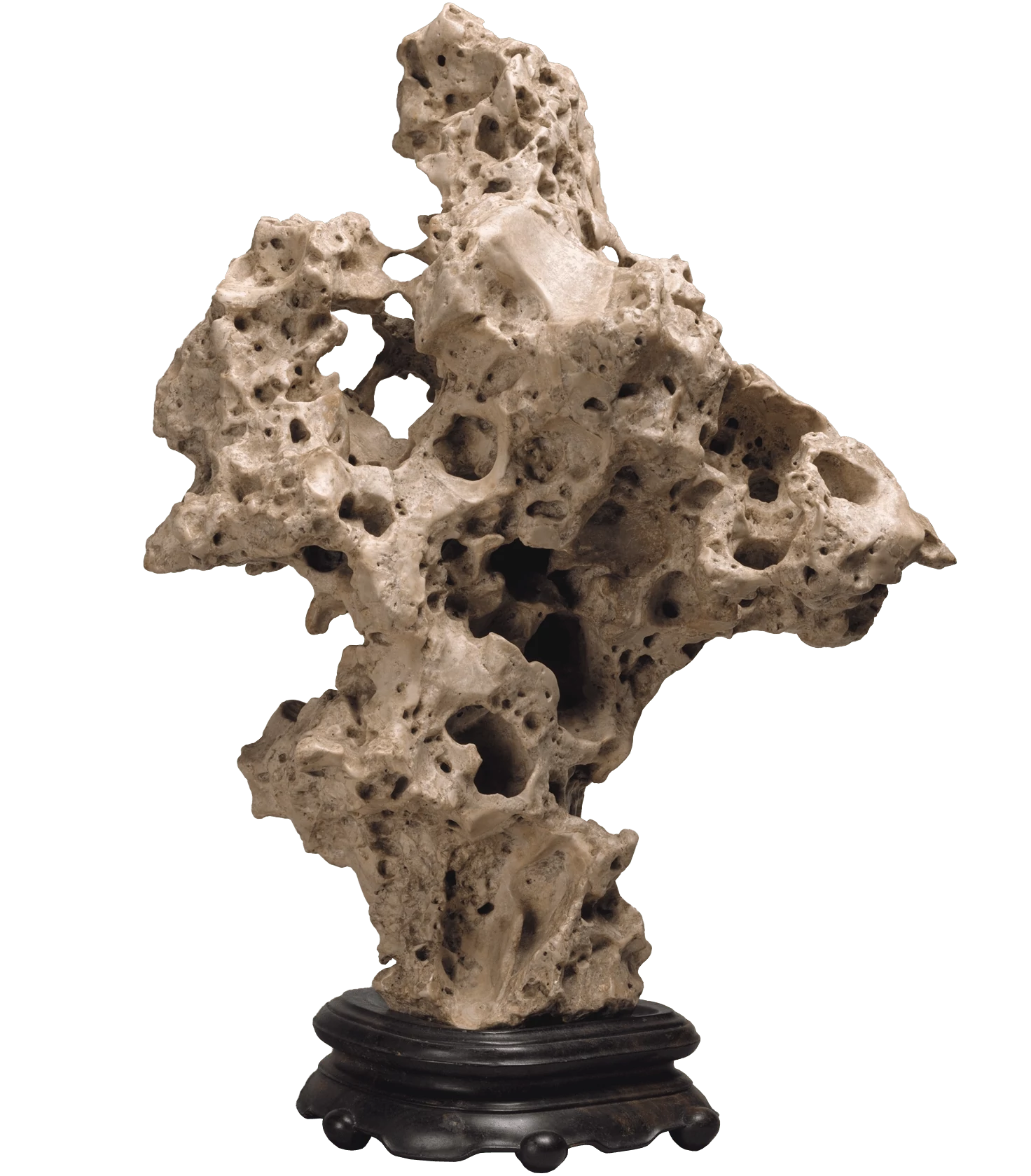Scholar's Stones
A world within a world


Bai Juyi had found a new lake. The Tang Dynasty politician had spent two decades alternating between skillful governance of Chinese provinces and repeated exile for pissing off the imperial powers with his scathing anti-war, anti-corruption views. Like many well-educated Chinese bureaucrats of his day, Juyi was a poet—and wielded his deceptively casual verses with brutal honesty. But moral integrity is stressful, and to find peace Bai Juyi took walks. In 826, Juyi was governing the city of Suzhou, an unusually relaxed commission leaving him time to explore the nearby Lake Tai, a massive freshwater basin in the delta of the Yangtze river.
On one such walk, Bai Juyi spotted two humps of the native limestone emerging from the shallow water, each eroded over millennia into rippling filigrees of arches, waves, twists and caverns. Juyi had them brought to his house, scrubbed the moss and mud from his new muses, and composed a short poem:
Emerald green mists and several autumn colors
Large waves left ten thousand ancient marks
Scraped and whittled to produce flat shards of green jade
If sliced into pieces, they become like the offspring of bluish-green clouds.
Wind erosion leads to their holes and crags
Moss penetrates or covers to guard their openings
Specific younger versions of several mountain peaks
Are like the grandchildren of Mt. Hua.
Beautiful rocks had been collected and displayed in elegant Chinese gardens and homes since the Han Dynasty, hundreds of years before Bai Juyi unearthed his stones from the muck of lake Tai. Rock collecting even spread to Japan in the early 7th century, when Chinese envoys gifted mounted stones to Empress Suiko, where their they became known as Suiseki (水石). But Bai Juyi’s reverent verses kicked off a mania for them. Soon China’s imperial chancellor Niu Sengru became obsessed with collecting, amassing more than 1000 fascinating stones, writing his own poems about them, and commissioning Bai Juyi to write more.
Lake Tai, whose uniquely pocketed rocks were called Taihu, became the center of a dangerous new industry. Stone fishing was described by the twelfth-century rock collector Du Wan in his monograph Yunlin shipu, “Those who harvest these stones dive for them, mallet and chisel in hand. A very toilsome business. When a fine specimen has been cut free, it is bound with huge ropes and then winched up into a large boat.”
Over the next hundred years, the appreciation of Gōngshí (供石), or ‘offering stones’ became a valued artform across China, with an expansive vocabulary describing ideal traits, hierarchies of desirability and myriad metaphors for interpretation. In the Joseon Dynasty stone collecting spread to Korea, where they were called Suseok (수석), and prized by Confucian scholars, earning them their common western moniker “scholar’s stones.”
You’ll usually know a scholar’s stone when you see it, because few natural objects look so alien. While they range from a few inches tall to four or five feet, most scholar’s stones are formed from karstic limestone. This stone is water-soluble under the right conditions, enabling a specific kind of erosion called speleogenesis, where veins of softer material dissolve and the hard remaining stone is left in astonishing, seemingly unnatural formations. The geology of different regions lends a distinct aesthetic to their stones. Formations like Bai Juyi’s from the Lake Tai basin are identifiable by their swiss-cheese dissolution pockets and pale color. Stones from Lingbi, in the Anhui province, are famously dark, featuring black or deep grey peaks, grottos and stalactites, often resonating with strange tones when tapped. Yingde limestone from the Guangdong province is also dark, but known for its dramatic grooves and striations, and more than a dozen other locations were mined for their unique formations.
As with most popular art forms, a formal vocabulary soon emerged to describe and rank scholars’ stones based on their mostly highly valued traits. By the end of the Tang dynasty these traits were agreed to be thinness (瘦 shòu), openness (透 tòu), perforations (漏 lòu), and wrinkling (皺 zhòu). Another measure was resemblance, when a stone looked like a mountain, or rolling wave, or a bird in flight. Though purists were quick to clarify that evocation was more interesting than resemblance—when a stone may not look like a mountain, but gave you the feeling of looking at a mountain.
Stones are cool and weird stones are cooler, but if you're wondering why rock appreciation was a dominant art form in China for more than 1000 years, that’s fair. In his introduction to a catalog of stones by Du Wan, the writer Kong Chuan put a deeply held cosmological belief into beautifully simple terms: “The purest essence of the energy of the universe coalesces into stone.” In the west, stones are the metaphor for stability, the ultimate unchanging element. But in dynastic China stones were understood to be dynamic, shifting—carrying the “ten thousand ancient marks” of compressed millenia. Stones were time travelers, they were beyond human knowledge. Stories were told of stones that spoke, that healed, that summoned rain. They were mined from the same caves and mountains that held secret Daoist paradises, and in their arches and hollows they condensed the mysteries of their origins into tiny islands, waiting to be explored by the imagination of anyone willing to take a moment, slow down, and contemplate them.
...
Got questions, comments or corrections about Scholar's Stones? Join the conversation in our Discord, and if you enjoy content like this, consider becoming a member for exclusive essays, downloadables, and discounts in the Obelisk Store.


